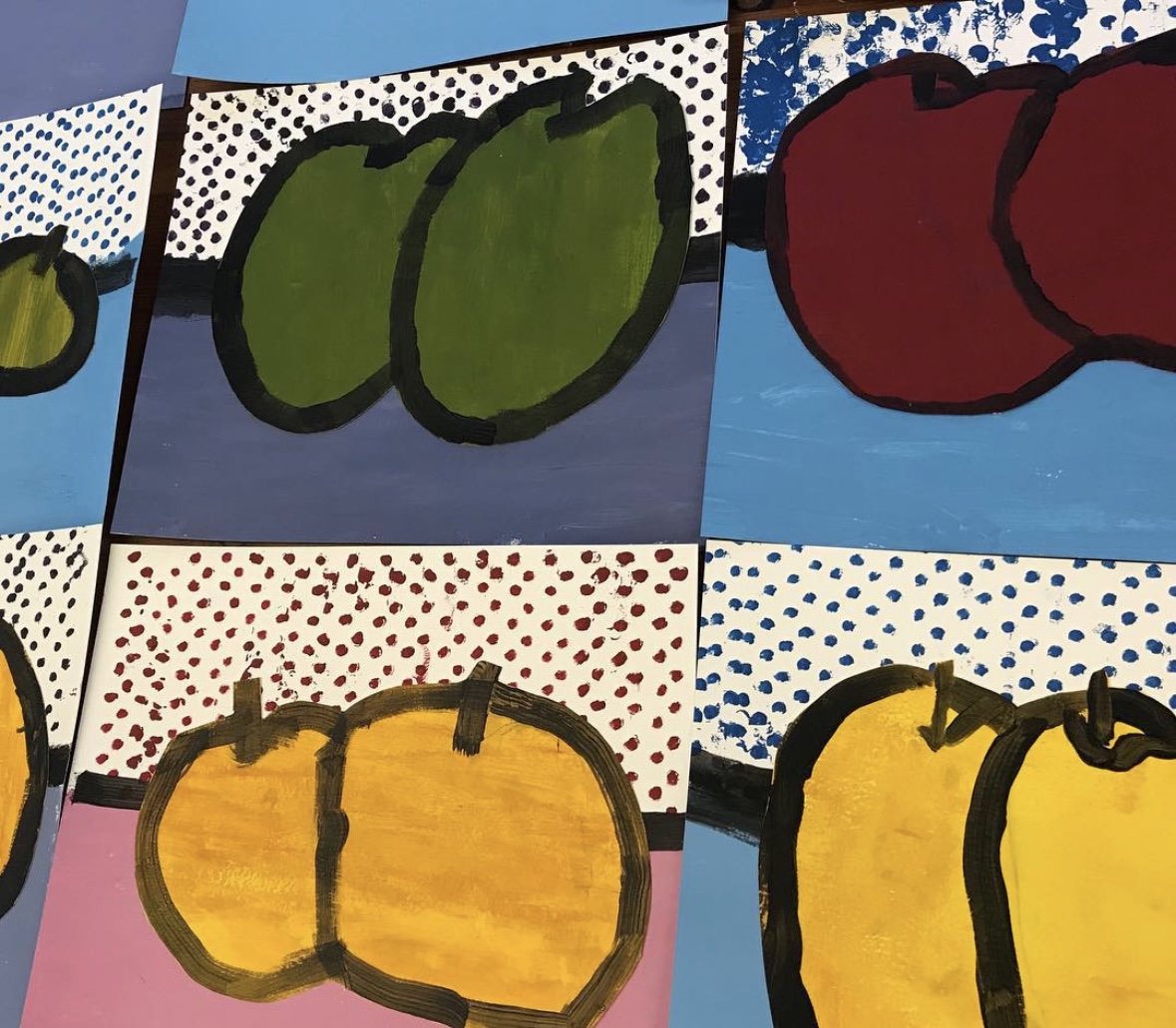
Here we are again, First-Days-of-School upon us. All of us teachers are certainly prepared with a hefty handful of academic goals, each comprised of an even heftier handful of learning objectivStill I can't help but smile, as Fall sneaks in from the wings stage right, and Summer exits the wings stage left. I'm in the audience applauding joyfully, overcome with Fall-feelings. And all this smiling reminds this teacher that education is more than the academic goals I have set for the coming year.
Education is looking up in delighted silence marveling that the leaves have, once again, begun to turn gold, rust, and chartreuse.
Education is learning to enjoy process, the process of entering into a great story, the process of engaging with a mathematical problem.
Education is the ongoing engagement with the process of success and the process of failure
Education is embarking on a journey.
Truth be told, education is a kindred relative of art-making.
So this year let's begin by inviting Paul Klee to teach our students to slow down into their important work.
As students are taught to engage in complicated activities slowly over time, they will begin to recognize that becoming educated is something far more weighty that getting the right answers. Slowing into their important work, students will enter the art of learning.

Introduce your students to Paul Klee, the Swiss/German artist of the 20th century whose whimsical paintings still take the world by storm, putting smiles on the faces of viewers of all ages.
Paul Klee reminds us that "A drawing is simply a line going for a walk." So let's go for a walk with Paul Klee lines.
Begin this exercise by providing a variety of finely sharpened colored pencils or a variety of colored, fine-tipped Sharpee pens. Have your student first choose one of the line/dot compositions to copy. Begin by showing the student how to trace from one line to one dot with a finger. Tracing enables the student to experience subtle angles on the page and to map out a plan for the copywork. Once a finger tracing is complete, start in one corner of a blank sheet of good quality drawing paper and draw the first "anchor" line with one color. When it is time for a dot, choose another color. For the new line that connects to that dot, choose yet another color. Continue this process until the Paul Klee black and white line/dot drawing has been transformed to a unique colorful masterpiece all your student's own. Please note, this exercise will take time and is best accomplished over two or three hour-long sittings. It can be accomplished by students young and old, by anyone, in fact who can manage a pencil with a willingness to try.
Finally, keep in mind, this exercise, while led by a famous artist, is not primarily an art lesson. Art is a secondary outcome. This is a lesson in slow attentive observation. It is an activity that will strengthen strategies that will be useful in all academic pursuit. Most importantly, taking a line for a work demonstrates that learning is and should be a joyful pursuit.
Happy fall to all.
-Kim
PS … and if you want to try a fun Paul Klee painting exercise, click through






